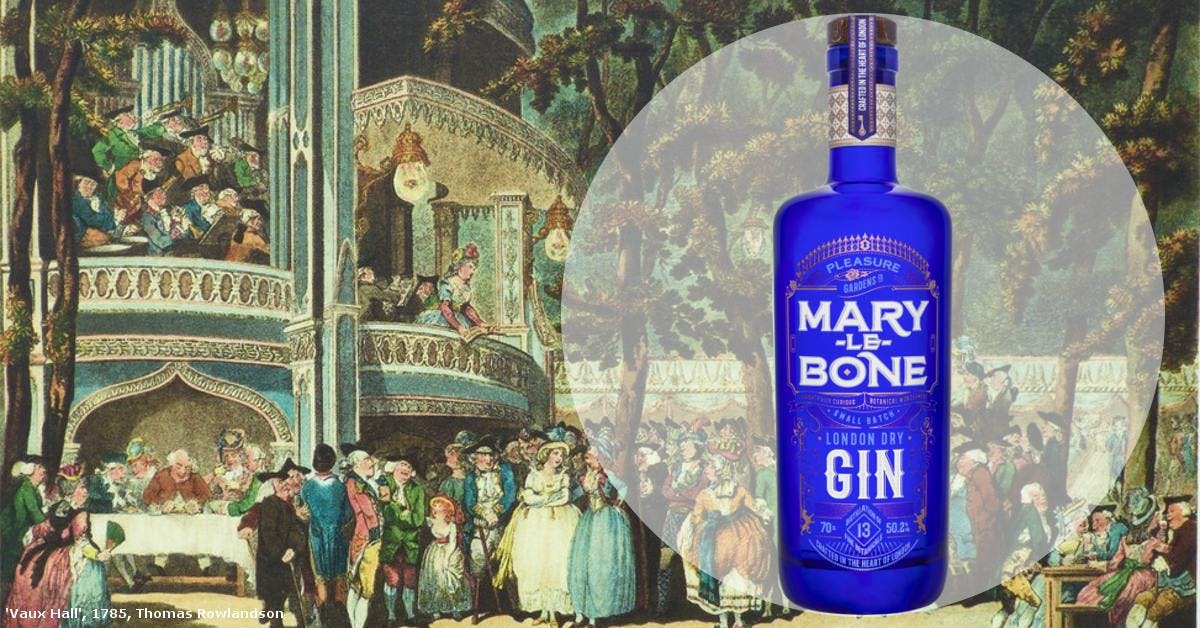
5 wondrous facts about London’s Pleasure Gardens
Once the latest novelties of a great metropolis, the capital’s pleasure gardens were a fascinating contradiction – and fell quickly into disrepute. Here are five things you need to know about the Georgian spaces that so inspired our very own Mr. Neill and his creation of July's Marylebone Gin.
1. These were no ordinary gardens
Built in what used to be the outskirts of London – Chelsea, Marylebone and Vauxhall, to name just a few – the pleasure gardens of the 18th and 19th centuries were so much more than picnic spots.
The theme parks of their day, London’s pleasure gardens were a riot of activity, music and scandal. Beautifully landscaped with sweeping paths, flowerbeds and even fountains and lakes, they were wonderful for a mid-afternoon stroll. But with hot air balloon rides, cafeterias serving hot and cold food (and booze!), menageries, dance halls and fireworks shows, you could spend a whole raucous weekend in the gated splendour of the pleasure garden.
2. They started free – but didn’t stay that way
The Marylebone Pleasure Gardens that inspired Johnny Neill’s amazing Gin of the Month started out as a bandstand and two bowling greens down the side of the local pub. Entry was free, even when several acres from a neighbouring estate were bolted on.
Unfortunately, the gardens became a haven of bad behaviour. Soon the garden was better known for the gambling, cock fighting and boxing that took place within its walls than the fruit trees that blossomed on the grounds. So when it was taken over by private concert promoters, the price of entry was immediately whacked up to a sixpence to keep out the ‘riff-raff’. Enthusiasts could even purchase a silver-plated annual pass – and peace of mind along with it.
3. Pleasure Gardens were the great melting pots of London
Entry fees may have kept out the real wrong’uns, but pleasure gardens remained one of the most accessible and exciting activities of the era. At just a shilling, entry to the Cremorne Pleasure Gardens in Chelsea was a steal, giving you access to elaborate fountains, a theatre where ballets and burlesques alike were performed, a fairy bower and a banqueting hall.
As such, pleasure gardens were sites for all sorts of people to gather and enjoy themselves. Shopgirls could bat their eyelashes at the sons of the aristocracy during the weekly firework display; great ladies could stroll past the ‘Chinese’ pagoda beside a postman. The whole of London got to laugh, dance and play in the same space – and, according to French author Francis Wey, the atmosphere was always one of good natured frivolity.
4. They had their dark points – quite literally
While the majority of the gardens were well-lit with glittering lamps and laughter – novelist Tobias Smith wrote that the illuminations and magic lanterns “almost made me feel I was in some enchanted castle or fairy palace” – so-called ‘dark walks’, where paths snaked off into shadow, were prime hunting ground for predators of all kinds.
Robbers, rapists and other criminals would stake out these dark paths and do their worst. Being attacked in this way was a commonly acknowledged risk of the pleasure gardens – as featured in novels and stories of the time – and was a major contributor to their downfall.
5. London’s growth eventually got the better of them
You may wonder at the lack of modern-day pleasure gardens in the current capital, but the demise of these public spaces is a tale as old as time in the Big Smoke. As London spread further out and the population swelled, the pleasure gardens – once on the outskirts – found themselves smack in the centre of the city. It was prime real estate, and they had angry neighbours to contend with.
Sick of the crowds and noise, and frightened by the spectre of criminals haunting the ‘dark walks’, residents pushed for the pleasure gardens to close. Marylebone Pleasure Gardens shut its gates as early as 1778, and was built over. Vauxhall Pleasure Gardens, perhaps the most famous in the country, persisted until the mid-19th century. Today, just a public park remains.







